telegraphic codes and message practice
scanned code directory
observational codes
International Code for Polar Ice
Meteorologisk Institut, København 1937
9 pages, 5.5 x 8.5 inches
Bound with (and incorporating) Atlas over Arktiske Isformationer, efter Alf Maurstad: Atlas of Sea Ice.
23 pp.
Hørsholm Bogtrykkeri.
Comments below.
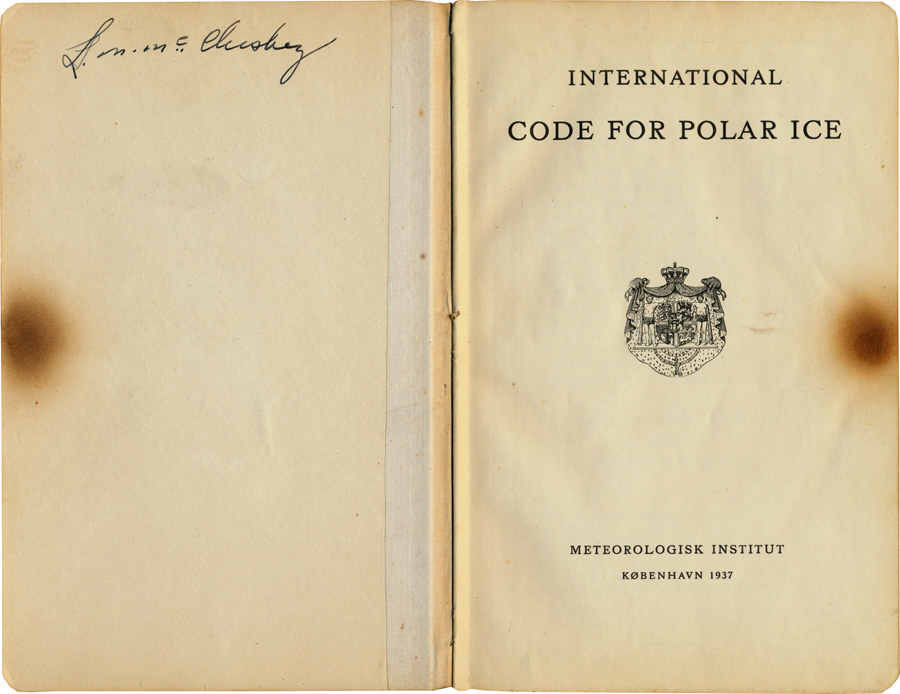 |
|
| title | |
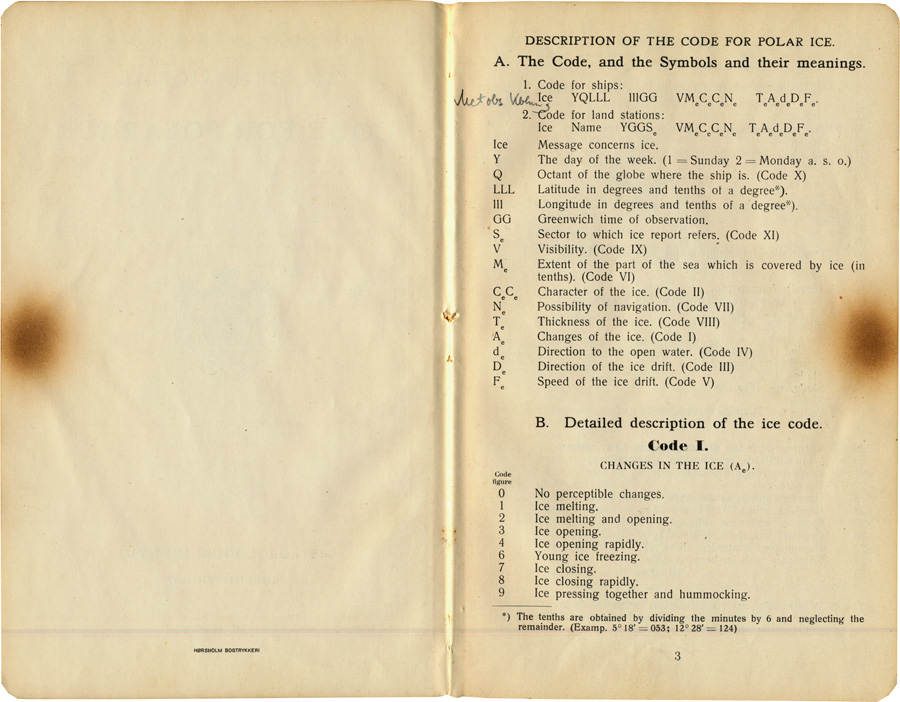 |
|
| pages 2-3 | |
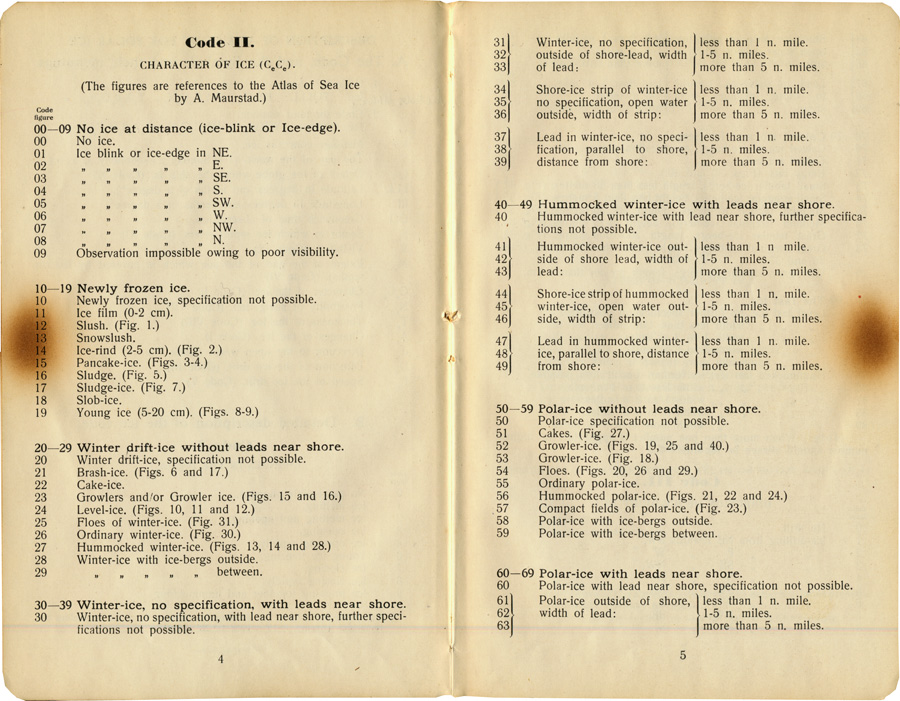 |
|
| pages 4-5 | |
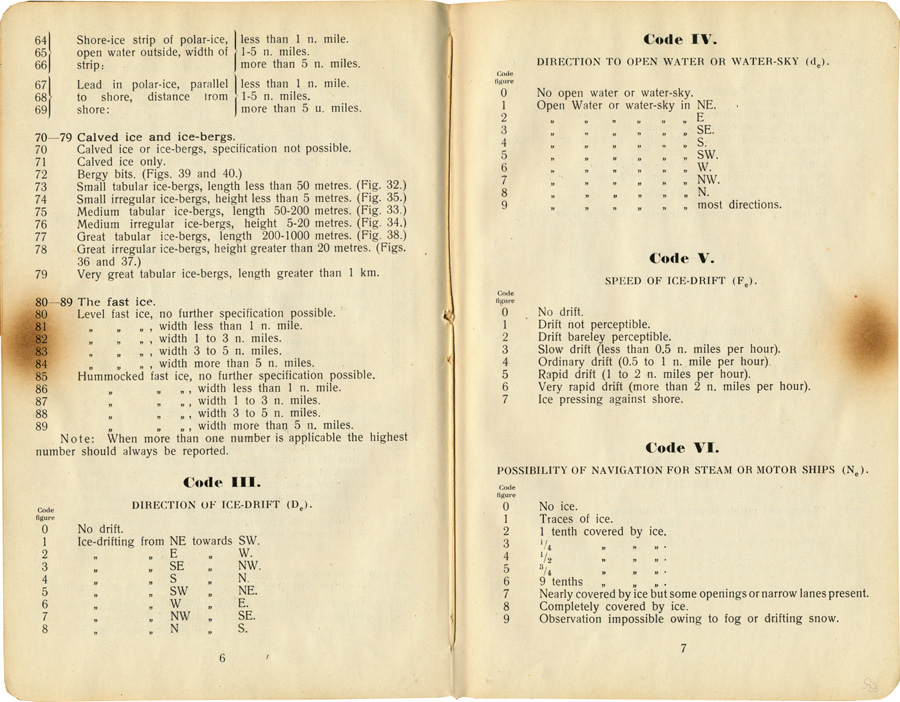 |
|
| pages 6-7 | |
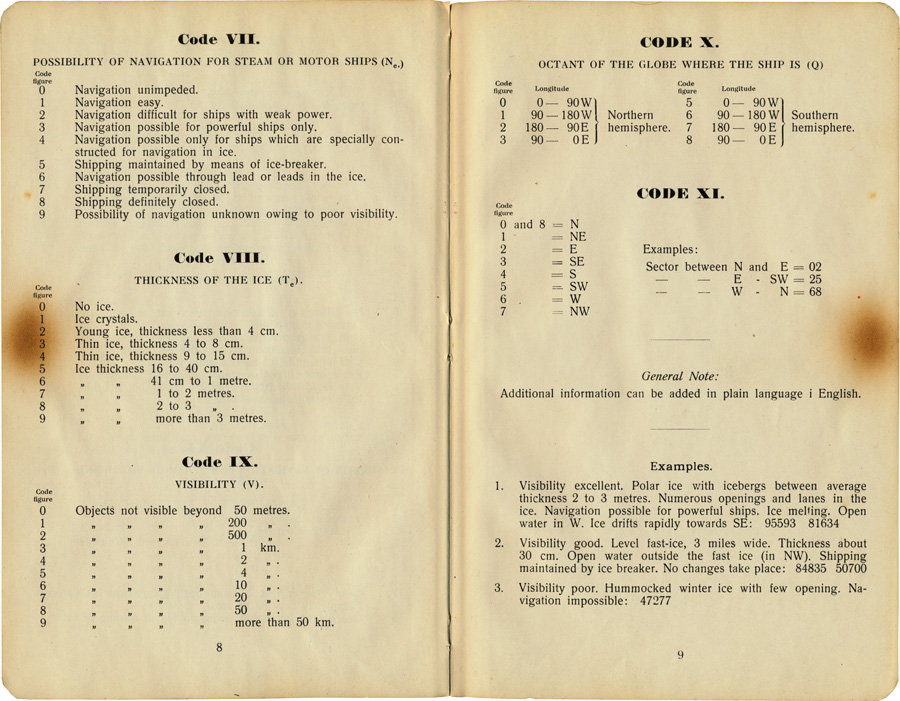 |
|
| pages 8-9 | |
The examples given on page 9 provide only 10, 10 and 5 figures, respectively, where a full message has 20 figures following the initial Ice
prompt.
Ice codes work in the same fashion as weather/meteorological codes, one facet — and one cipher position — at a time. Much meteorological observation can be automated; discrimination of ice conditions and characteristics may be harder to achieve without the human eye?
For more on ice codes, see Arctic Sea Ice. Proceedings of the Conference conducted by the Division of Earth Sciences and supported by the Office of Naval Research. Conference held at Easton, Maryland, February 24-27, 1958. National Academy of Sciences, December 1958.
In particular, these —
B. Rodhe. Sea Ice Observing and Reporting Technique in the Baltic.
(pp57-68), here , and
Kou Kusunoki, The Present Situation of Sea Ice Observation in Japan.
(pp 39-47), here.
Kusunoki is quite interesting for his narrative of Japanese sea ice observations prior to and during the war. Both of these papers include ice codes.
Also of interest (to me), on nomenclature not codes, but close enough, is —
EWG Sea Ice Atlas Glossary (1994), a first attempt to systemize in one- volume terms related to ice and its properties, to the properties of ice sheets, to ice forecasting, and to the scientific and operational support of ice navigation.
here.
F. Wyneken published an International Ice Code in 1908; he is mentioned in the Annual report of the Chief Signal Officer (made to the Secretary of War for the year 1888). Washington, D.C., 1889, thus —
Mr. F. Wyneken, publisher of the Atlantic Ice Reports, New York City, has been furnished semi-weekly with extracts from all reports received at this office of the occurence of icebergs, field ice, derelicts, wrecks, and other obstructions to navigation in the North Atlantic.
here.